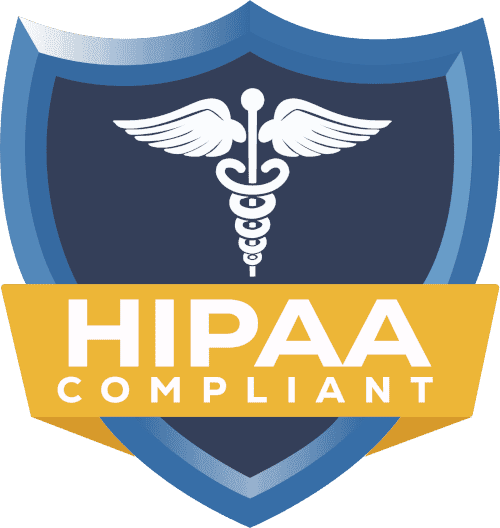How to Get Credentialed with Insurance: A Guide for Providers

To be honest, the healthcare provider credentialing process isn’t exactly something most medical professionals dream about during their years of training. But this is the administrative barrier that keeps you at arm’s length from that needed payment for services rendered. Provision of services from an individual practitioner, practice group, or multi-provider facility, whichever model you choose to work under, the knowledge of how to credential a provider with the insurers is essential to your financial stability.
What’s Credentialing After All?
Getting a clear picture before getting into the particulars of how it’s done: That’s what credentialing of a provider is. It’s defined as a systematic verification process whereby healthcare providers seek compliance with the set standards required by a health plan or network so that fees will be reimbursed for services offered. This may include verification of education, experience, licenses, certifications, work history, insurance for malpractice claims, and several others. It’s like the insurance company’s way of saying, “We need to make absolutely sure you are who you say you are before we start cutting checks.” Fair enough, right?
The Timeline Reality Check
Here’s something most credentialing guides aren’t going to tell you up front: this process takes time. A lot of time. 90-180 days on average from application to approval. And that’s when everything goes smoothly!
Why so long? Every insurance company has its particular verification process, committees that meet on their own schedules, and sometimes, the paperwork just sits on someone’s desk waiting for attention. Planning ahead isn’t just smart; it’s essential for your cash flow.
Step-by-Step: The Healthcare Provider Credentialing Process
1. Gather Your Documentation
Let’s start with the mountain of paperwork you’ll need to bring along:
• Your medical degree and residency certificates
• Your license(s) to practice medicine in the state
• DEA registration
• Any board certifications you hold
• Detailed CV with no gaps in work history
• Malpractice insurance certificate
• NPI number documentation
• Social Security number
• References – usually 3-5
• Copy of hospital privileges
• Immunization records
• Signed background check consent form
Pro tip: After all, create a digital “credentialing folder” of all these documents to save hours of hunting all this down each time you apply to a new payer.
2. Complete the CAQH ProView Profile
It’s the one shortcut in the process that really pays off. CAQH ProView from The Council for Affordable Quality Healthcare (CAQH) is the universal credentialing database that most major insurers use. Complete your profile thoroughly once, and many payers can access this information, instead of requiring separate applications.
Remember to update this every quarter; an outdated CAQH profile can stall your applications without you even knowing it.
3. How to join an insurance panel?
Not all insurance panels, after all, are accepting new providers all the time, some are closed completely, and others may have particular needs or perhaps be based on specialty or location. Before applying, be sure to call the provider relations department to see if they are accepting applications in your specialty and in your area.
Ask them this explicitly:
- Are you accepting new providers in my specialty at this time?
- Are there specific needs or gaps in my geographic area?
- What is the usual timeline for credentialing and enrollment?
- Any specific credentialing requirements beyond the standard qualifications?
4. Submit Applications
After verifying that there are openings, you will have to submit applications to every payer. As usual, this will involve:
- The application form filled in
- Contracts signed
- W-9 form
- Information for electronic funds transfer
- Tasks or requirements specific to any given payer
The contracts should be singled out. These stipulate your fee schedule and practice duties. It would be advisable to have a healthcare attorney review them before you sign; what appears to be routine paperwork can have far-reaching implications for your practice.
5. Follow Up Relentlessly
Here’s where credentialing best practices really separate the successful from the frustrated: Insurance companies are not known for their communication skills during this process. Regular follow-up isn’t just recommended; it’s required if you want to avoid unnecessary delays.
It is recommended to create a robust tracking system that can:
- Hold application submission dates.
- Follow-up call dates.
- Whom they contacted.
- Status updates.
- Required additional information.
- Next steps and deadlines.
Frequency of calls should be set at every two weeks for each payer. Yes, every two weeks. Make friends with the provider relations folks; they are your besties in going through this process.
6. Address issues as they come up (and they will)
If and when they arise, without delay. Hiccups commonly include but are not limited to
- Incomplete applications.
- Missing documentation
- Outdated CAQH information.
- Inconsistent information between different sources.
- Additional verification.
Having one person devoted to credentialing for your practice helps catch these issues so they don’t fall through the cracks and add months to your timeline.
Credentialing Best Practices That Work:
Start Early, Like, Yesterday Early
The single most effective strategy? Start credentialing 3-6 months before you need to see patients. For new practices, this means starting the process when you are setting up your physical space. For employed providers, before their first day of work.
Ideally Credentialing Experts
The credentialing process is complex, time-consuming, and full of potential pitfalls for individuals, which is why credentialing specialists exist. The best way through all of these is a good credentialing company or a dedicated staff member much more efficient than trying to handle it along with clinical responsibilities.
We maintain a Master Profile
Create a kind of source of truth document that bundles all of your professional info in a single file – from the date of graduation and medical school to exact start and end dates in every position. This just helps ensure consistency across all applications. Caveats: increased specificity means revalidation is a red flag that requires deeper investigation and causes delays.
Don’t Forget Revalidation
Credentialing isn’t quite finished once one has walked through the process. Most payers will require revalidation within that 2 to 3 years. Missing these deadlines can lead to network termination and claim denials. I would recommend putting calendar reminders well in advance of these deadlines.
Use Technology to Your Advantage
Such systems can dramatically streamline the credentialing process. A nice system will track deadlines, store documents, automate follow-ups, and keep tabs on expiration dates for licenses and certifications. It’s an investment that generally pays for itself in reduced administrative time and faster enrollment.
The Bottom Line
In such a landscape provider credentialing has become an indispensable evil. Although never easy, with knowledge of the process and implementation of these best practices, will substantially reduce your stress and time to reimbursement.
Remember: Ultimately, credentialing is all about patient safety and quality care – goals every provider shares. The paperwork may be tiresome, but the cause is one we can all get behind.
Ready to transform your credentialing process from a headache to a manageable part of your practice? Start by implementing these strategies today, and you’ll be well on your way to smoother sailing through insurance credentialing.
Need help? That’s why we’re here. Credex Healthcare: We make the credentialing process pain-free for providers just like you.


















